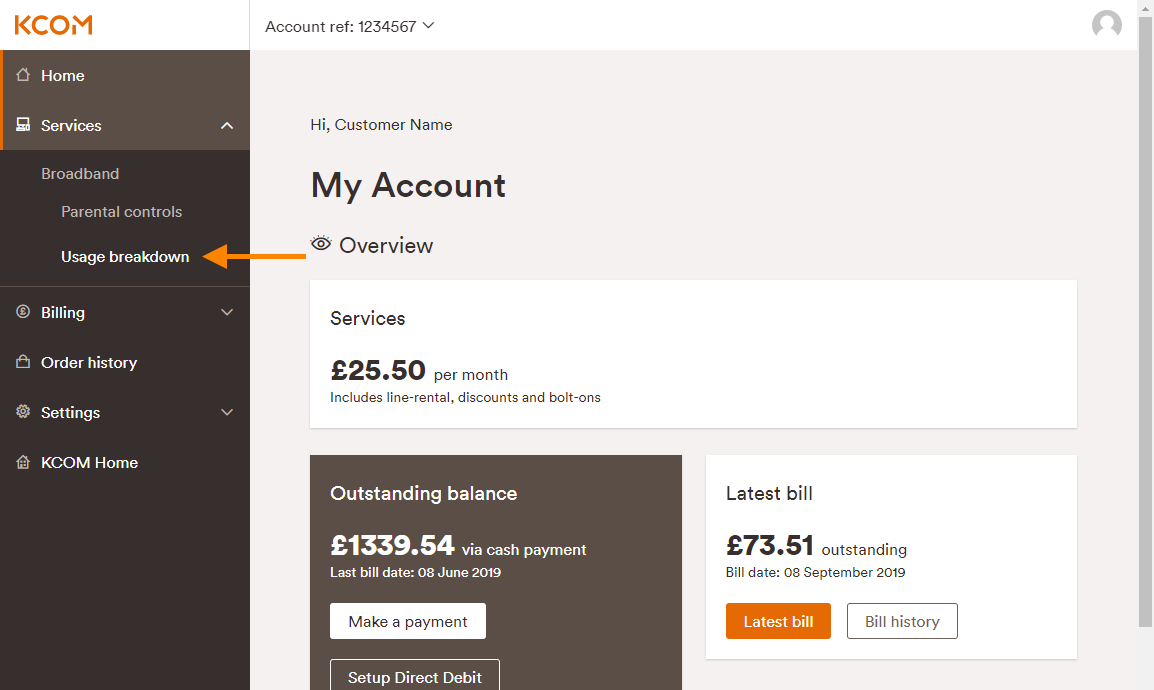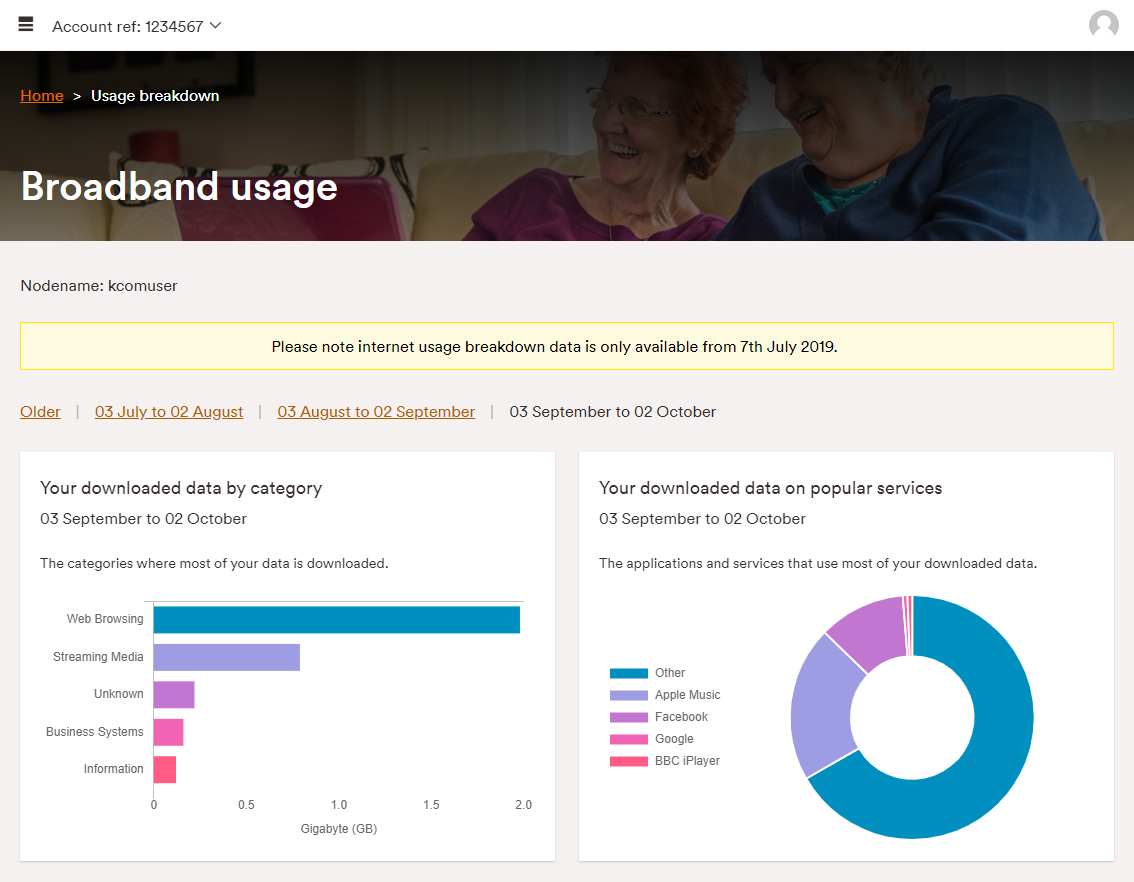What has my data allowance been used on?
Written by KCOM Support on 05/11/2024. Posted in Broadband.
Here you can discover how to check your internet data allowance and what it means.
You can check what type of activities have used your data allowance by logging into My Account and looking at the usage breakdown.
How to view your usage breakdown
The instructions below should be followed to check your data usage if the broadband package you're on has a usage cap (e.g. 100Gb). If you're on an Unlimited broadband package, you can find a graph of daily usage under 'Services' then 'Broadband'.- First, visit kcom.com/home/my-account to open My Account, then login with your email address and password.
- Once logged in, open the sidebar on the left and click on Services > Usage Breakdown.
![MyAccountUsageBreakdown1]()
- Your usage breakdown for the current month will now be shown. You can see a breakdown of usage by category (the type of usage) and by service (the services you've been using).
![MyAccountUsageBreakdown2]()
What do the categories mean?
| Category | Description |
|---|---|
| Network Infrastructure | Network services that allow devices to connect and communicate. This includes networking hardware, software, services and facilities |
| Remote Access | The ability to access a computer, such as a home computer or an office computer, from a remote location. This allows employees to work offsite, such as at home or in another location, while still having access to a distant computer or network, such as the office network. |
| Information | Information - usually text - read or downloaded while browsing the internet. This type of usage is usually low. |
| Messaging and Collaboration | Tools that deliver e-mail, calendars, messaging services, file sharing and other products for sharing information and supporting collaborative work. |
| Streaming Media | Video or audio content sent in compressed form over the internet and played immediately, rather than being saved to the hard drive. Services such as YouTube, Netflix, Prime Video, Apple Music and Spotify are examples of streaming media. |
| Business Systems | Online systems used by businesses that connect data and processes to drive forward business objectives and/or provide service or goods to customers. |
| File Sharing | The practice of sharing or offering access to digital information or resources, including documents, multimedia (audio/video), graphics, computer programs, images and e-books. Torrenting is an example of file sharing. |
| Web Browsing | Navigating through websites on the world wide web. |
| IP Protocols | Protocols by which data is sent from one computer to another on the internet. Each computer (known as a host) on the internet has at least one IP address that uniquely identifies it from all the other computers on the internet. |
| File Transfer | The movement of one or more files from one location to another. On the internet, the File Transfer Protocol (FTP) is a common way to transfer a single file or a relatively small number of files from one computer to another. |
| Entertainment | Mostly refers to gaming, usually through online services such as Xbox Live or Playstation. |
| Being Analysed | Data that is being processed and has yet to be analysed to determine usage type. |
| Untracked | Data can't be tracked, such as over secure connections like VPN. |
| Unknown | This type of usage is unclassified. |
Was this article useful?


